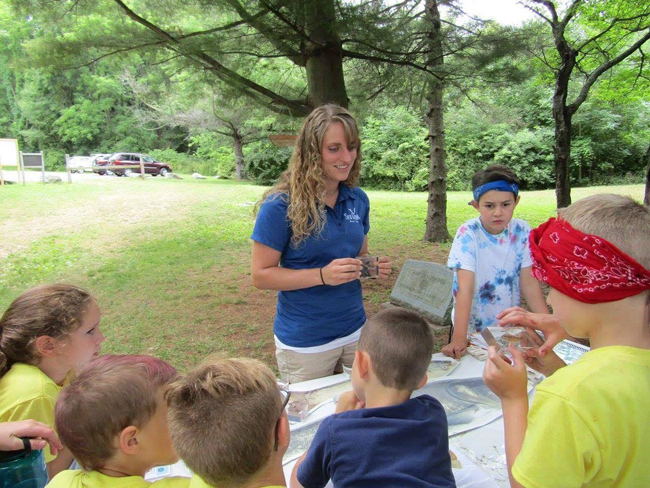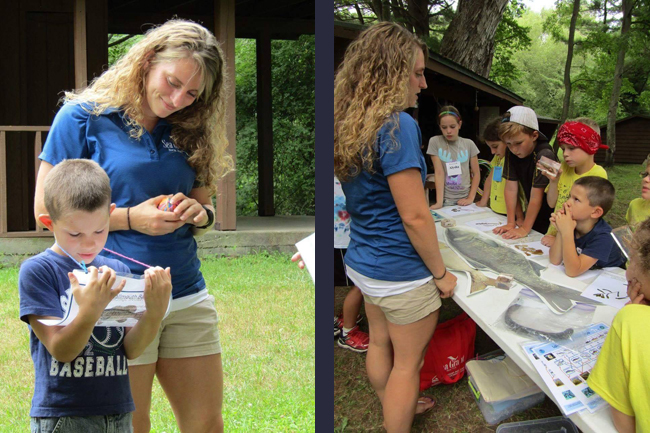Watertown, NY, May 31, 2017 - About 80 middle schoolers from Belleville-Henderson and Sandy Creek central schools were at Southwick Beach today for what the New York State Department of Environmental Conservation calls Dune Fest.
New York Sea Grant Extension Aide Brittney Rogers (pictured at center, below), a planner of the event, offered a food web activity to show students the effects of introducing invasive species into aquatic ecosystems.

"They're learning about basically what's in their own backyard, a unique system and some of the animals, the invasive species, the fish, the wildlife," said Irene Mazzocchi, DEC wildlife biologist.
So what stuck in the kids heads?
"Learning about the birds and the competition and how they're finding food and the park police how we got to through the buoy on to the cone," shared Brayden Billman, 8th grader at Belleville-Henderson, with WWNY-TV News 7 / WNYF (Your North Country Fox 28).
One focus was wetlands, which is an especially important lesson this year.
Katlynn Murray of the DEC demonstrated what would happen to water levels if the wetlands didn't exist.
"If it wasn't for these wetlands, the water levels would be twice as high," she said.
Murray says that's because wetlands absorb water.
"The spring comes through with this beautiful rain and this beautiful water and the wetlands catch all that sediment building that's happening. It helps make sure it's not going into our ball fields, our recreational areas or our places of business," she said.
The students say Dune Fest is a good way to learn about a potential future career.
"I think it would be something I'd go into so to learn about; this is really fun," said Billman.
A day of fun, while learning about what's unique in their own backyard.

More Info: New York Sea Grant
New York Sea Grant (NYSG), a cooperative program of Cornell University
and the State University of New York, is one of 33 university-based
programs under the National Sea Grant College Program (NSGCP) of the
National Oceanic and Atmospheric Administration (NOAA). The NSGCP
engages this network of the nation’s top universities in conducting
scientific research, education, training and extension projects designed
to foster science-based decisions about the use and conservation of our
aquatic resources. Through its statewide network of integrated
services, NYSG has been promoting coastal vitality, environmental
sustainability, and citizen awareness about the State’s marine and Great
Lakes resources since 1971.
New York Sea Grant maintains Great Lakes offices at SUNY Buffalo, the
Wayne County Cooperative Extension office in Newark and at SUNY Oswego.
In the State's marine waters, NYSG has offices at Stony Brook University
and Stony Brook Manhattan, in the Hudson Valley through Cooperative
Extension in Kingston and at Brooklyn College.
For updates on Sea Grant activities: www.nyseagrant.org has RSS, Facebook, Twitter, and YouTube links. NYSG produces a monthly e-newsletter, "NOAA Sea Grant's Social Media Review," via its blog, www.nyseagrant.org/blog. Our program also offers a free e-list sign up via www.nyseagrant.org/coastlines for its flagship publication, NY Coastlines/Currents, which is published 1-2 times a year.